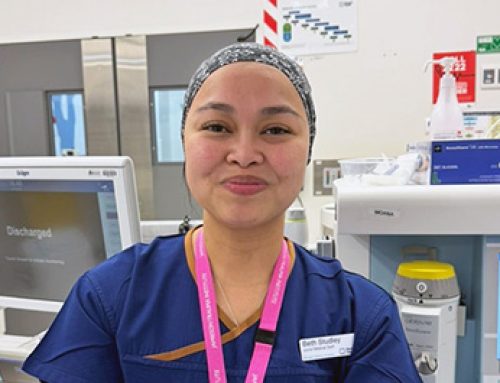Measuring the burden of bronchiectasis in Australia
By Jack Roberts, AusHSI PhD Scholar

I started my journey in 2015 as an Administrative Assistant for the Respiratory infection Outreach and Research (RiOAR) team with QUT and the Royal Children’s Hospital while completing my first undergraduate degree in communications. I quickly became a member of the larger Cough and Airways Research Group (CAARG) led by Professor Anne Chang at the Centre for Children’s Health Research and was promoted to Research Assistant whilst studying a second degree in biomedical science.
In this role, I found that working with the families of children with chronic respiratory conditions was really rewarding. After many hours and countless conversations with these children and their families, a common theme that emerged was that of feeling invisible within the healthcare system particularly in community care. From this, I knew I wanted to help amplify their voices so that healthcare providers and healthcare funding decision makers would listen.
Through my work with CAARG, I was eventually introduced to the staff and students at the Australian Centre for Health Services Innovation (AusHSI). In 2021 I was fortunate enough to be accepted onto a PhD program funded by the AusBREATHE Centre for Research Excellence. My PhD project explores ways to measure the cost and burden of bronchiectasis. Bronchiectasis is a rare, chronic respiratory condition that affects adults and children. Based on my previous experience, it is a neglected condition to which I’m hoping to give a bit more attention!
Bronchiectasis has gained new research interest in the past few years. Despite this, there are relatively few economic evaluations of new interventions, which are needed to inform the allocation of healthcare funding. One useful way of evaluating the economic merit of an intervention is a cost utility analysis, which compares the costs against something called “health utility”. Health utility is an outcome measure that takes in to account the quality of life gained by an intervention, on a scale of 0 (death) to 1 (full health). While there are many generic tools for measuring health utility, none have been shown to work in children with bronchiectasis. Therefore, it is possible that currently available tools might not be very good at measuring subtle changes in their health condition. My PhD will look at what bronchiectasis costs in Australia, and whether we can develop better tools for measuring health utility in children with Bronchiectasis and similar chronic respiratory conditions.
Through AusHSI, I’ve received training in numerous research skills, including: performing economic evaluations, measuring health utility and quality of life, statistical analysis, and data science. AusHSI’s staff and students are very knowledgeable and willing to share that knowledge with others and collaborate in a supportive manner to achieve truly amazing milestones. While my PhD journey so far may not have been typical, I know that this work, with the help of my friends and colleagues at AusHSI, CAARG and beyond will help to highlight the voices of patients with bronchiectasis to healthcare decision makers.







